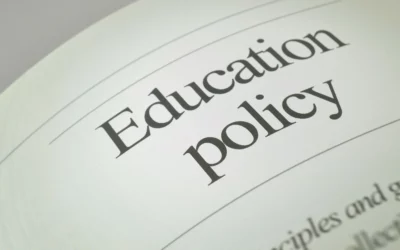
Written by Christine Cooke Fairbanks
April 4, 2024

Strengthening parents’ rights is a worthy policy goal. Parents are a child’s first and natural teachers, and they guide a child’s education thereafter. But it should not become an anti-teacher movement. Viewing it this way would be counterproductive to the shared objective of student success.
Similarly, increasing transparency of curriculum does not have to be at the expense of teachers and their professional lives. In fact, transparency in curriculum and instruction has many possible benefits for teachers.
Making students and parents better partners with teachers
One of the major complaints within the educator profession is that too much is being expected of teachers. Not only must they teach, but nowadays they must also discern and address a host of nonacademic issues that impact a child’s learning when those students walk in their doors. The other side of that coin is that perhaps too little is expected of students and their parents. One education scholar, Rick Hess, has written and spoken about the relationship between teachers and parents as a “handshake,” where both sides have responsibilities, noting that parent responsibilities have been overlooked in recent years for fear of blaming students and families.
Parents ought to be expected to play an important role, not an intrusive one, but an assisting one. If parents have greater access to curriculum, assignments or other instructional materials, more parents might support students with coursework, address learning challenges, or remind them of assignments.
One study discussed that an instructor benefit of transparency methods being used in a course was student “ownership of transparency,” meaning that students would proactively check in with teachers if assignments or expectations were unclear. In a similar way, parents might “own” their part of the responsibility of student learning as well.
Creating collaboration, alignment and focus
One study showed that teachers saw benefits to using transparency methods because it allowed other teachers to learn from each other and collaborate. This is a teacher-to-teacher benefit and might be especially beneficial for new or struggling teachers who need mentorship and ideas of more experienced educators.
Another study showed that when teachers employed transparency methods during their coursework it pushed them to consider how activities and assignments aligned with learning outcomes and assessments. This might be beneficial for teachers to examine their approaches to instruction over time.
Pre-empting conflict with parents
In terms of respecting political sensitivities, one current teacher says she would support curriculum transparency in part because it would mitigate the possibility of parents feeling blindsided by a topic coming up.
Being as transparent as possible before a term starts allows parents and/or students to vet a course prior to a class beginning. Ideally the result would be that parents could exercise their choice and decision-making early on, before a child encounters instruction their parents don’t want taught. A parent’s role ought not to be seen as dictating a public school teacher’s curricular or pedagogical choices, but simply choosing or not choosing a course, once they can discern what it entails.
Giving purpose to workload
Another benefit might be to ensure that workload has actual meaning. The Legislature attempted to cut unnecessary burdens from LEAs and teachers in HB 499, reducing reports and the frequency of certain trainings teachers must complete from annually to every three years. Reducing unnecessary burdens for LEAs, schools, and teachers is good public policy, and it can be accomplished by simply removing a requirement that’s not needed, changing it, or giving greater meaning to work already being done.
A potential benefit of curriculum transparency to teachers is that creating lesson plans could have greater meaning through use by students and parents. One teacher said she regularly submits lesson plans to her administration but doesn’t know why, never receives feedback, and views it as busywork. Other teachers, especially new educators, write up daily lesson plans to organize their work.
If lesson plans, or some publicly consumable version, were also made transparent to students and parents who could use them to benefit their learning, the task of creating or submitting lesson plans might take on added meaning.
Conclusion
Our current debate about curriculum transparency is narrow, limited and contentious. The discussion is missing possible benefits to teachers, and it’s one we need to have to get this policy right.

Insights: analysis, research, and informed commentary from Sutherland experts. For elected officials and public policy professionals.

- Transparency in curriculum or instruction has potential benefits for teachers.
- Increasing access to curriculum might make students and parents better partners with teachers and may preempt conflict with parents about sensitive topics in class.
- Teachers might discover that transparency of instruction increases collaboration, alignment and focus of learning and gives meaning to lesson planning.
Read More
Education policy to consider during the 2024 election season
Here’s a look at what each presidential candidate is likely to focus on in education, given their track records and campaign platforms.
Ignoring the text of the Constitution is a mistake
A written Constitution is entirely superfluous if the document is simply meant to give the people what they want.
What you need to know about election integrity
It should be easy to vote and hard to cheat. This oft-quoted phrase has been articulated as a guiding principle by many elected officials wading into voting and election policy debates in recent years. So why has this issue been so contentious, and what’s the solution?


